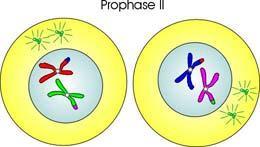

Prophase I begin and take place at the initial stage of Meiosis I whereas Prophase II begins in meiosis II. Difference between the inception of prophase I and II It is characterized by a lot of latency and maturity. Interphase is the phase between meiotic stages. Interphase therefore refers to a phase between other phases of a stage. Inter originates from Latin just like a pro. Prophase, therefore, refers to an initial phase of a stage like in meiosis.
PROPHASE 1 AND 2 PRO
A new plane is formed and is around 90 degrees to the original spindle in Meiosis I.Īs is commonly known, pro originates from Latin and means before. At its advanced stage, the nuclear envelope breaks. The two pairs separate and form two centrosomes. A daughter centriole forms and places itself perpendicular to the ‘mother’. Only replication of centrioles takes place. It occurs immediately without passing through an interphase. Prophase II is the first stage of Meiosis II. It is at this stage that nuclei and the nuclear envelope disappear thereby allowing for the spindle nuclei to enter the nucleus. The paired chromosomes now form bivalents. Genetic recombination occurs at this stage because it is where crossover mainly does occur. At this point, the chromosomes gain visibility by thickening and shortening. It involves the pairing and crossovers of the already duplicated chromosomes. Difference between the definitions of Prophase I and II It is these two gametes that come together during fertilization to form a new cell with a complete pair of chromosomes. In the later stage of meiosis II, the duplicated split to form haploid gametes. Here, it is the chromosomes that duplicates in the initial meiosis stage and later the chromosomes exchange their genetic information. Meiosis, on the other hand, is a different process all together. In simpler terms, it is a process through cell breaks into two identical cells through the process of cell division. Mitosis is the process of the cell division where the replicated cells reach a point of separating into two nuclei. Each of the two mitosis and meiosis has several stages through which the two are fully realized.

These cell divisions come in stages and not an abrupt change as many could expect. For sexual reproduction to be realized, massive cell division through meiosis and mitosis must occur.


 0 kommentar(er)
0 kommentar(er)
